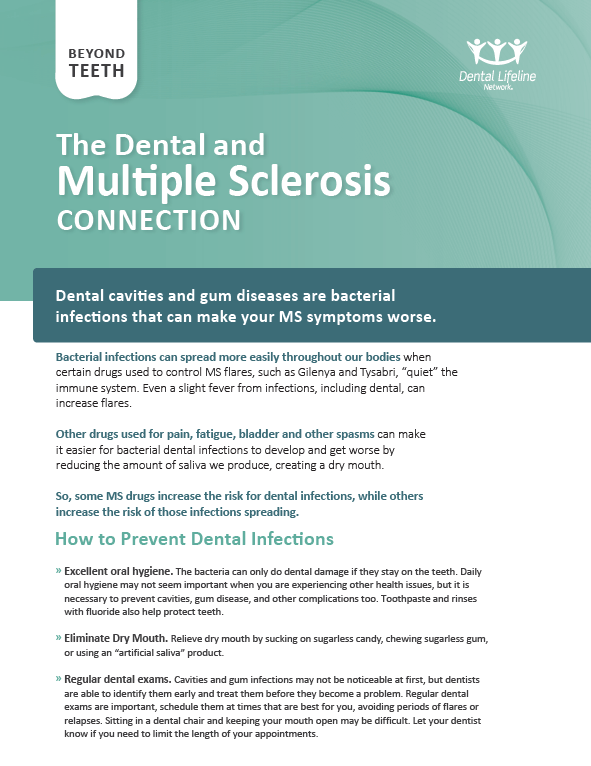Dental cavities and gum diseases are bacterial infections that can make your MS symptoms worse.
Bacterial infections can spread more easily throughout our bodies when certain drugs used to control MS flares, such as Gilenya and Tysabri, “quiet” the immune system. Even a slight fever from infections, including dental, can increase flares.
Other drugs used for pain, fatigue, bladder and other spasms can make it easier for bacterial dental infections to develop and get worse by reducing the amount of saliva we produce, creating a dry mouth.
So, some MS drugs increase the risk for dental infections, while others increase the risk of those infections spreading.
How to Prevent Dental Infections
- Excellent oral hygiene. The bacteria can only do dental damage if they stay on the teeth. Daily oral hygiene may not seem important when you are experiencing other health issues, but it is necessary to prevent cavities, gum disease, and other complications too. Toothpaste and rinses with fluoride also help protect teeth.
- Eliminate Dry Mouth. Relieve dry mouth by sucking on sugarless candy, chewing sugarless gum, or using an “artificial saliva” product.
- Regular dental exams. Cavities and gum infections may not be noticeable at first, but dentists are able to identify them early and treat them before they become a problem. Regular dental exams are important, schedule them at times that are best for you, avoiding periods of flares or relapses. Sitting in a dental chair and keeping your mouth open may be difficult. Let your dentist know if you need to limit the length of your appointments.
Resources

Download a PDF fact sheet of this information
This information is a public service of the Dental Lifeline Network. The content is for educational purposes only. It should not be used as a substitute for the medical advice of one’s health care provider.


